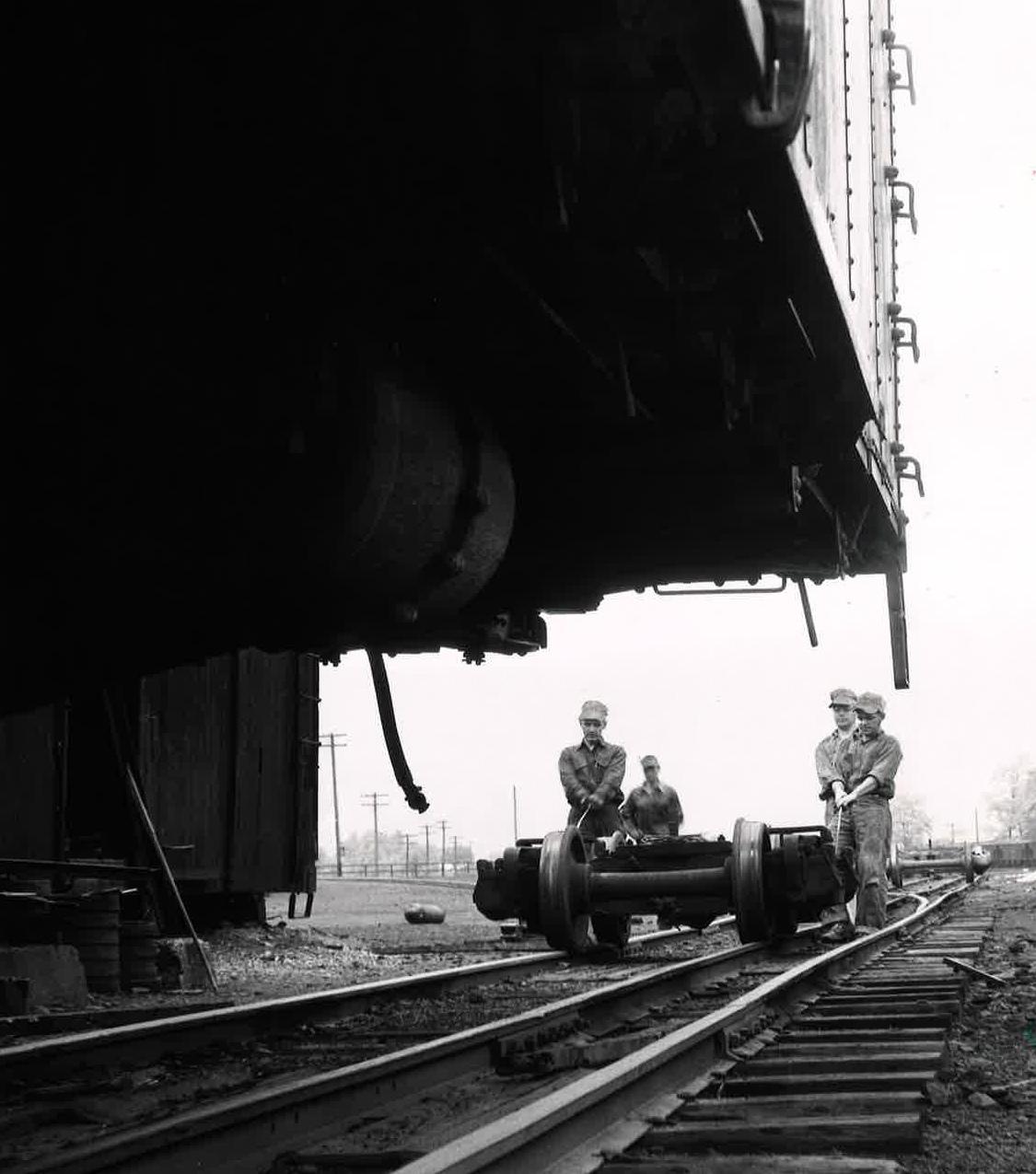
History of track gauge: The gauge of a railroad is the distance between the inside vertical surfaces of the head of the rail. Standard gauge is 4 feet, 8-1/2 inches. This is the gauge used when steam railroading began. It became the common gauge of Britain, North America, and Western Europe — except for Spain, Portugal, and Ireland.
But how did this seemingly odd width become standard?
When George Stephenson designed the Stockton & Darlington Railway in the north of England in 1825, he used a gauge of 4 feet, 8 inches simply because he had been familiar with it on a mine tramway called the Willington Way on the Tyne River below Newcastle. In turn, the Willington Way was built to this gauge. It was common on roads in the area. After the Stockton & Darlington, Stephenson used the same 4 feet, 8 inches for the Liverpool & Manchester, the world’s first railway between major cities. There he widened the gauge by one-half inch, probably to give more lateral play to the flanges.
At the outset, the choice of 4 feet 8-1/2 appeared arbitrary. The tramways of the Newcastle area had a variety of other gauges, wider and narrower, any of which Stephenson might have chosen.
By the 1870s, archeological excavations at Pompeii and elsewhere revealed that the gauge Stephenson chose may have been the approximate gauge of Roman road vehicles. In a famous episode, an American engineer, Walton W. Evans sought to test this hypothesis by measuring with a metric rule — so as to avoid bias — the ruts made by carts and chariots at Pompeii. He converted his measurements to inches and found that the ruts, center to center, were about 4 feet, 9 inches, consistent with a gauge of slightly less than that. Later archeology confirmed that this was the Romans’ common gauge.
The survival of this gauge for road vehicles in Western Europe, including Britain, resulted in its being carried over onto early railways. An oral tradition says it was established at two strides of a Roman soldier by Julius Caesar to standardize ruts for his war chariots, but this has no documentary evidence and is not generally accepted. As English railway historian Charles E. Lee wrote, it probably represents the optimal size of a road vehicle relative to the indivisible size of a horse. Anything less would have underutilized the horse, and anything greater would have put excessive strain on the animal. The gauge has been carried over into automotive transport, also.
In railroading, the optimal gauge with respect to a horse is irrelevant. Rather, the relevant indivisibility is that of a human being. Any technological process has to be adapted to the fact that human beings generally come only in one size, from 5 feet, 0 inches to 6 feet, 6 inches. Certainly, the gauge of 4 feet, 8-1/2, inches was not grossly inappropriate. It allowed passenger cars that seated two people in comfort on each side of an aisle wide enough for people to pass. Freight cars were large enough to accommodate the size of packages that people could carry in and stack. The equipment had a moderate degree of overhang.
Broader gauges tried, and rejected, in England
There has never been a lack of observers who thought 4 feet 8-1/2 was suboptimal — men as disparate as James J. Hill, David P. Morgan, and Adolf Hitler, to name three. Essentially, this interpretation is based on the fact that area-volume ratios of cylinders become more favorable as size increases. As a consequence, large boilers produce their output at a lower average cost than small ones. On a broad-gauge steam locomotive, the boiler could be larger and slung lower for greater stability.
The man who followed broad-gauge ideology most thoroughly was Isambard Kingdom Brunel, chief engineer of the Great Western Railway of England, who thought 4 feet 8-1/2, much too small for the operations at 50 to 60 mph that he envisioned. He adopted a huge gauge of seven feet — apparently exactly 7 feet, 0-1/4 inches — for the Great Western, and testified before Parliament enthusiastically of its superiority. Parliament was not convinced, and mandated 4 feet 8-1/2 for future building, but specified 5 feet 3 for Ireland. This could be interpreted as indicating Parliament really considered a broader gauge preferable, but required 4 feet 8-1/2 simply because it was nearly universal except in the west of England. The Great Western was converted to 4 feet 8-1/2, slowly, bringing broad-gauge operation to an end in 1892.
Early American railroads build to different gauges, then standardize
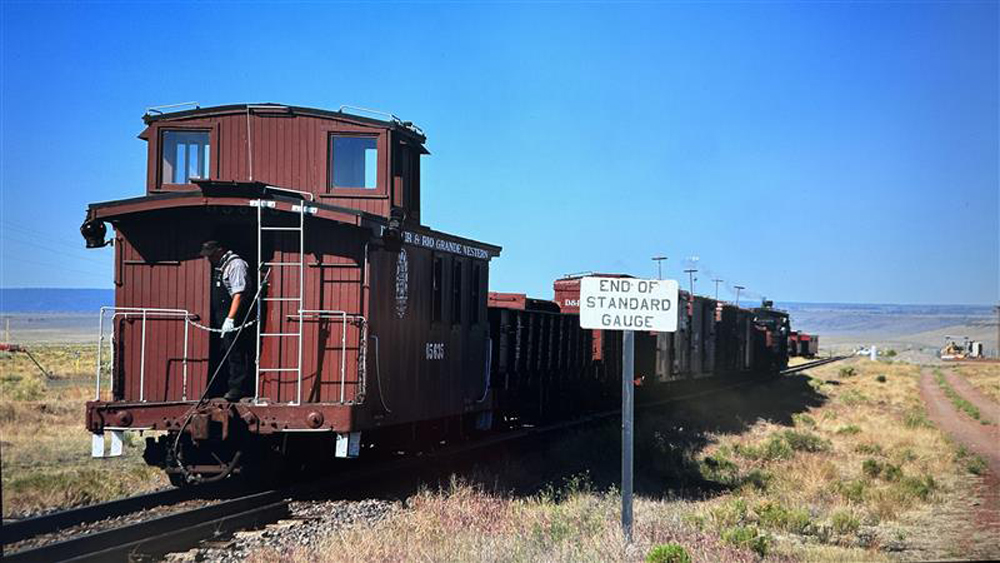
The American experience was similar. The gauge of 4 feet, 8-1/2 inches came here mainly because American engineers expected — erroneously — to use a great many British locomotives. Because early American railroads were expected only to connect bodies of water that were impractical to connect with canals, there is no reason to have expected much gauge uniformity. Early railroads did not anticipate interchange of equipment.
But because the Baltimore & Ohio and Boston & Albany used 4 feet, 8-1/2 inches, the gauge was off to a flying start. The Pennsylvania used 4 feet, 9 inches, which was compatible. The 6 feet, 0 inches of the Erie and the Lackawanna was the most important northern broad gauge. The Canadian railways used 5 feet, 6 inches, at least in part, for military considerations.
In the South, broad gauges were dominant. If there was a common gauge there, it was 5 feet, 0 inches. By 1861, track of this gauge extended from Norfolk and Richmond to Memphis and New Orleans, although lack of some physical connections and interchange kept it from being a network.
The Civil War demonstrated the undesirability of gauge differences. Both the Union and Confederate governments encouraged interchange of equipment. After the war, the rapid growth in grain movements from the Midwest to the East was the greatest single force for homogeneity.
The Lincoln administration, after planning the transcontinental railroad at 5 feet, 0 inches to conform with the existing railroad in California, decided on 4 feet 8-1/2 for consistency with the most important Eastern railroads. This assured that 4 feet, 8-1/2 inches would be the North American standard gauge.
The Canadian lines converted to it in 1872-1873, and the Southern railroads began a process of conversion that ended with a massive conversion blitz on Memorial Day weekend 1886.
Narrow gauge alternatives
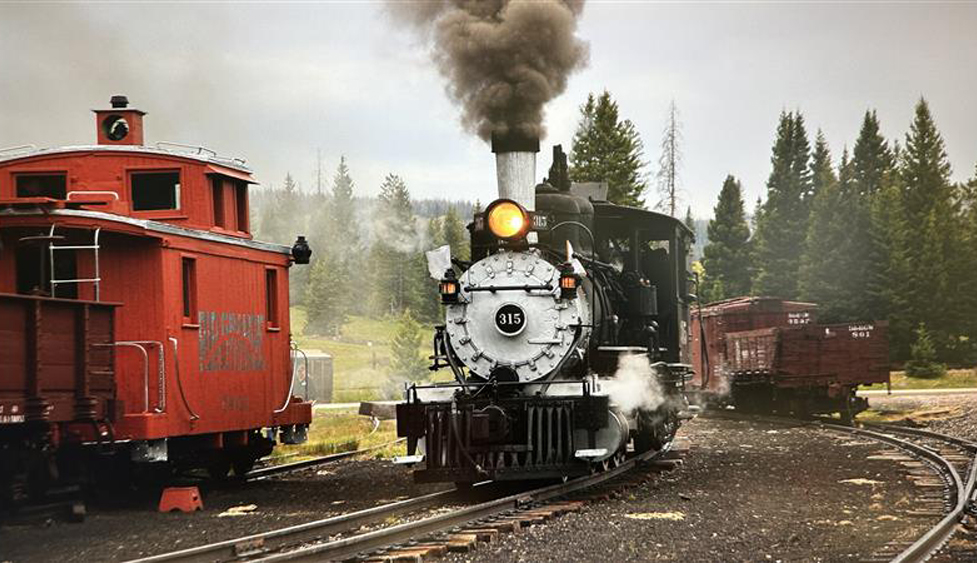
Oddly, as gauge homogeneity was spreading throughout the continent, there arose a movement for narrow-gauge railroads. A Scottish engineer, Robert Fairlie, in 1870 exposited the idea that great economies in weight could be achieved by use of small equipment such as had become common for private carriers serving mines, timber stands, and factories. His fallacy was reversing the actual relation mentioned earlier, that area-volume ratios become more favorable as size increases.
Remarkably under the circumstances, the narrow-gauge movement had a vogue of 13 years, from 1872 to 1885, before it collapsed. Most U.S. narrow-gauge mileage was converted by 1900, although a 3-foot-gauge network in southwestern Colorado survived for almost a century.
The damage this movement did was much worse elsewhere. It festooned most of sub-Saharan Africa with a gauge (3 feet, 6 inches) poorly suited to the heavy mineral traffic its railways handled, and it beset India, Australia, and Argentina with serious problems of gauge incompatibility.
The editor of the principal railroad trade journal of the 19th century, Matthias Nace Forney of The Railroad Gazette, in the course of his opposition to the narrow-gauge movement in the 1870s, reported that railroad engineers with whom he had discussed the question had responded, in general, that 4 feet, 8-1/2 inches was slightly suboptimal, and that something around 5 feet 0 would have been better. Forney agreed, but felt that homogeneity for free-running of equipment nationwide at 4 feet 8-1/2 was more important than any gains that could be gotten by an effort at change.
No doubt modern engineering techniques could be used to identify an optimal gauge, but short of an impressive demonstration to the contrary, Forney’s view of the 1870s remains the most valid judgment.






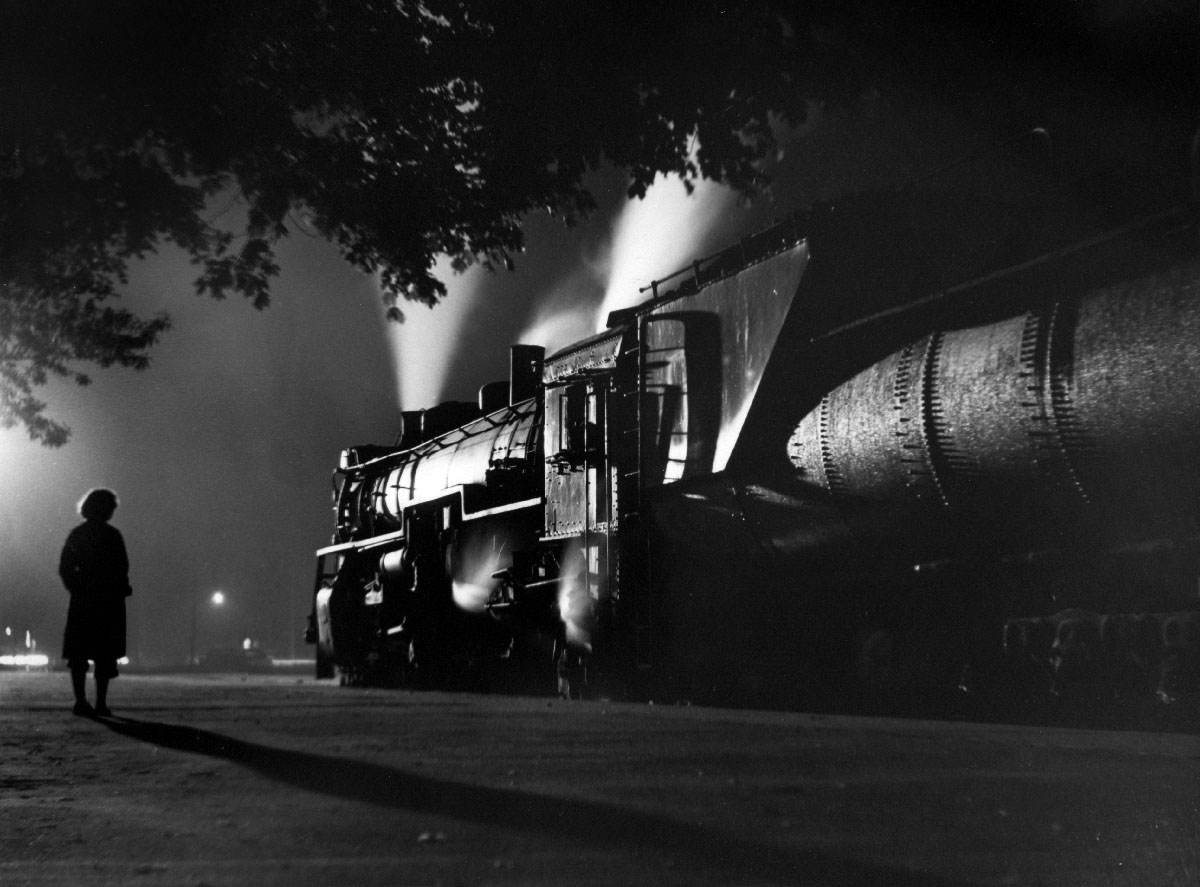
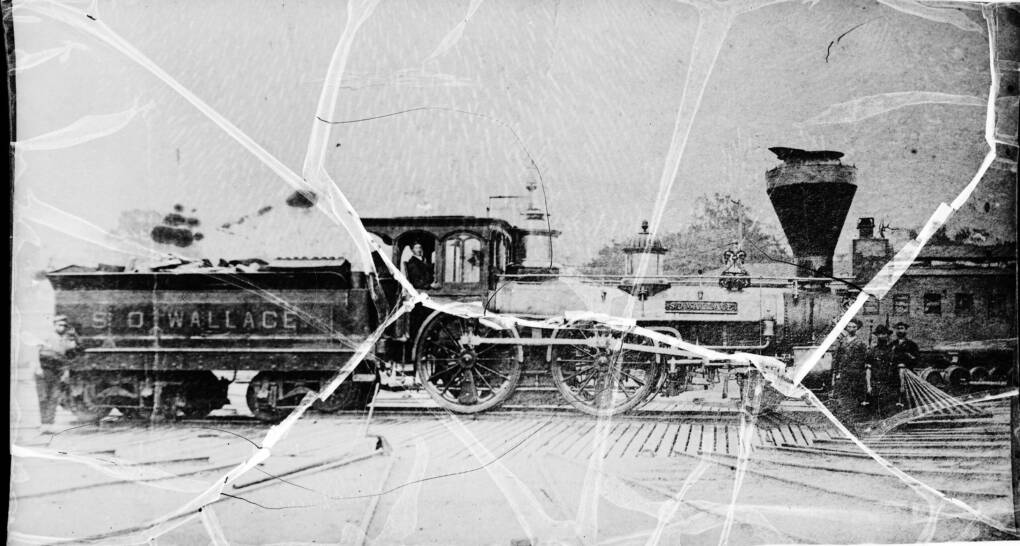
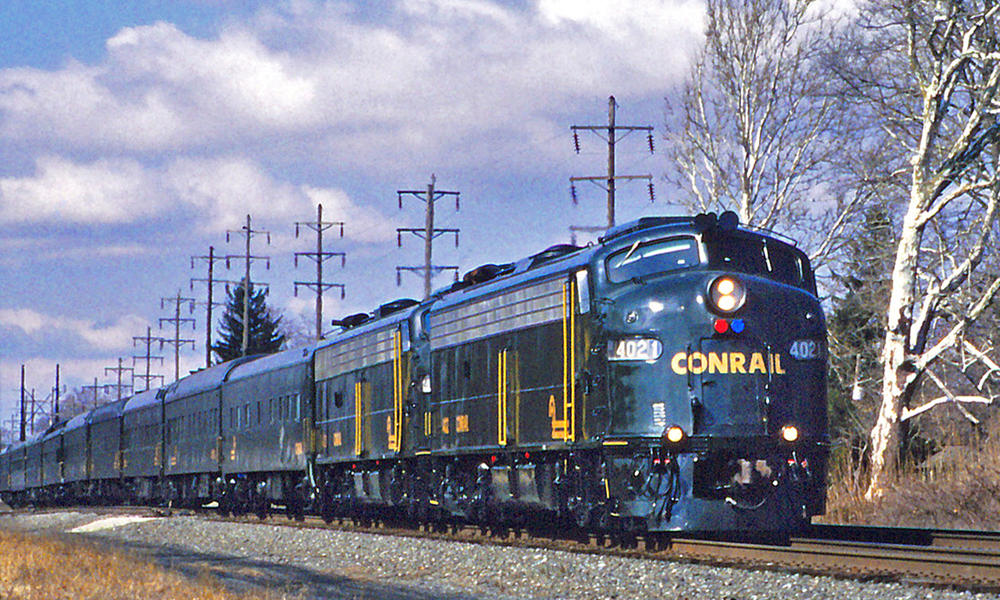
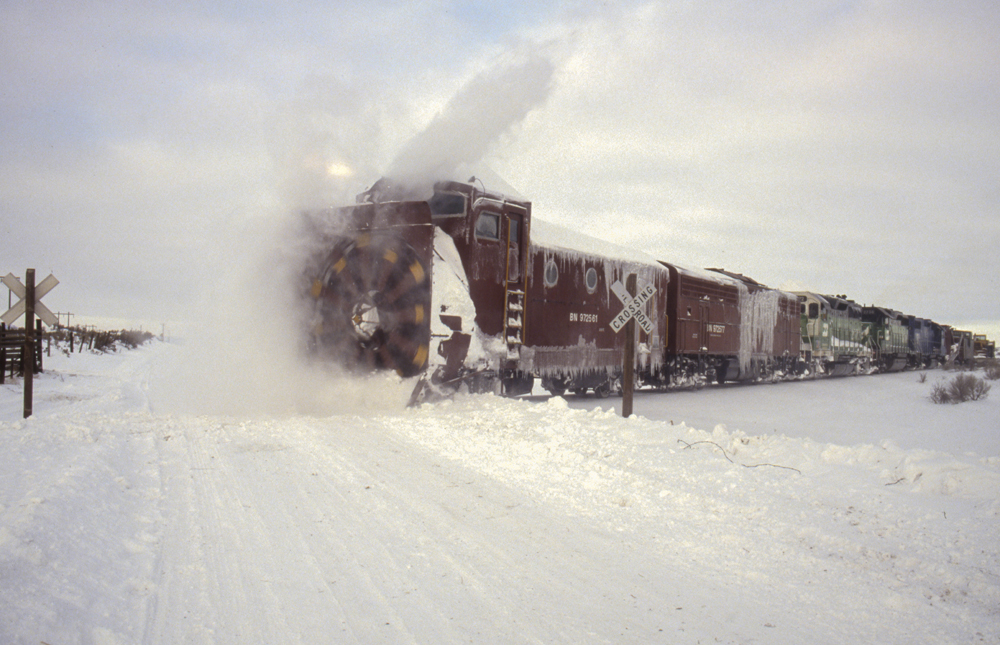




I’m not sure “did damage” is the proper terminology for narrow gauge railways.”
I agree, 3’6″ gauge is an unnecessarily standardized gauge, and it does cause problems when nestled amongst other gauges.
But meter gauge is widely used in switzerland, and it is much preferred in the alps to standard gauge. It actually does have advantages in extremely mountainous regions.
They are also a great addition to any modeler’s collection
Actually, narrow gauge still persists in southern Colorado.
ever heard of Durango & Silverton? My Grandparents rode it just last year.
and I want to ride it myself. Next time I’m out there.